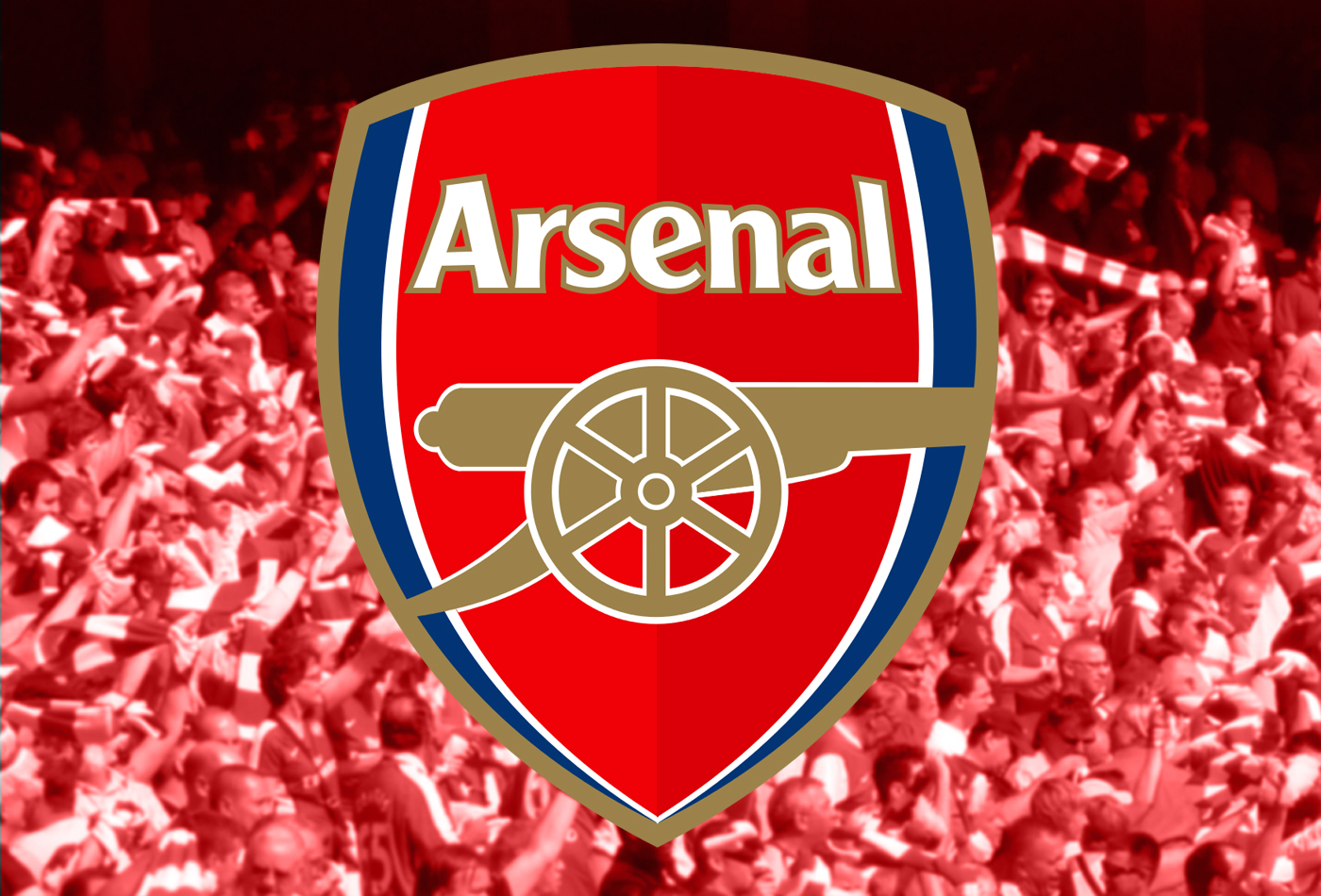In London you can breathe football in all its neighborhoods, but if we talk about London teams, I think the first team that comes to mind is Arsenal, the most successful team in that city, the Gunners.
It was founded in 1886 by a group of workers from the Arsenal arms factory in Wooolwich and they first called it Dial Square after the sundial at the factory entrance. Soon after a game in South London and meeting in a pub called Royal Oak, they changed the name of the team to Royal Arsenal, a mixture of the names of the pub, the Royal Oak and Arsenal, where they worked.
Arsenal’s red kit actually came about out of necessity, as they had no money or uniforms at the time. Some former Nottingham Forest players who had come into the team asked the Forest for help, and they sent them some dark red kits. Later that red was lightened and the white collar and sleeves, already characteristic of Arsenal, were added.
In 1891 it became a professional club and in 1893 it changed its name to Woolwich Arsenal and was admitted to the Second Division, playing its first league game on September 2, 1893 at Manor Ground against Newcastle, with a final result of 2-2, finishing the league in a meritorious ninth position.
The promotion to the First Division would come in 1904 but the following years were economically very hard, so much so that in 1910 Woolwich Arsenal declared bankruptcy. The purchase of the club by the businessmen Henry Norris and William Hall prevented the disappearance of the club and Norris himself devised a strategy to raise the club and make the finances grow, he came to the conclusion that it was necessary to leave Manor Ground and move to a new stadium with a better location and above all, with a nearby underground station that would give the possibility to congregate many people. The chosen area was Highbury, in the northern part of London and this decision caused a lot of commotion and controversy in other clubs, such as Clapton Orient and especially Tottenham (club with whom he still has a strong rivalry fostered by this fact and some more that we will see later).
In 1913 Arsenal were relegated to the Second Division and when work on the new Arsenal Stadium in Highbury was completed, they moved there and the club changed its name back to The Arsenal. The next objective was to return to the first division, but the war would change the tempos.
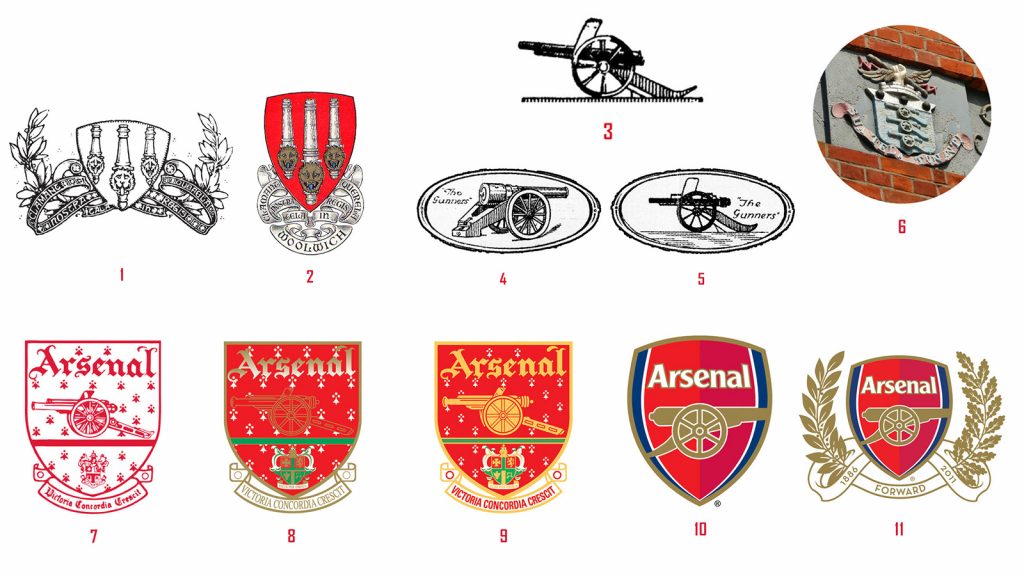
At the end of that season there was a four-year hiatus in football due to World War I, and when the competition resumed in 1919, there was an extension of teams participating in the First Division, from 20 teams to 22. A great controversy was generated to elucidate what would be the criteria to make that expansion, it was voted that the champion (Derby County) and runner-up (Preston North End) of the Second Division of the season before the stoppage were promoted, but the problem came when the remaining two teams were chosen. The teams that would have to be relegated from the First Division according to the ranking were Chelsea and Tottenham, but it was shown that the last match of the season between Manchester United (which was playing for relegation) and Liverpool (which was in the middle of the table and nothing was played) was rigged by players from both teams. Due to Manchester’s victory, it was Chelsea who should have been relegated, but in light of events they were allowed to continue in the top flight. With three of the four places already awarded, only one last place remained to be decided and this is where the other big reason for the Arsenal – Tottenham rivalry comes in. It was argued that Tottenham should not be relegated for the same reason as Chelsea, but it was ruled that there was nothing to link Tottenham’s relegation with anything irregular, therefore they would be relegated, and when the logical thing would have been for the third place in the Second Division (Bansley) to be promoted, it was the fifth place that was promoted, and that was Arsenal. Rivers of ink ran down this decision and even today it is said that the Arsenal owner employed unclear methods, so to speak, in winning the vote that he won 18-8 to be the one chosen for promotion.
In the summer of 1925 Arsenal hired Herbert Chapman as coach and with him at the helm Arsenal won its first title, the FA Cup in 1930 and the league titles in 1930-1931 and 1931-1932 until he died unexpectedly of pneumonia in 1934.
Herbert Chapman was a major figure in the club’s history, and not just because he was the first coach to bring titles to the Gunners’ showcases. In the sport plane he was very important for the innovations that he made in the tactical schemes with his famous WM (that was a 3-2-2-3), scheme that created tendency in the time, also for the signings that he made, the diets that he introduced never before seen or the care of the quarry… and beyond the sport plane he promoted the use of artificial light, the use of judges of goal and a second referee, he developed a system of loudspeaker that transmitted all the news of the club to the fans, created a letter and number marker that was copied across the country over the next 50 years… in addition, Chapman is behind the Highbury Watch, added the white stripe on the shirt to better distinguish the players and removed the “The” from the name to lead the alphabetical table and also, thanks to him, Arsenal managed to change the name of the Gillespie Road underground station next to the stadium to Arsenal.
The loss of Chapman did not make Arsenal any less successful, proof of which was the three league championships and the FA Cup they won between 1934 and 1938.
With the arrival of World War II, football came to a standstill in England and Highbury was bombed in 1941. When football returns in 1946, Arsenal is weakened, no longer the machine that dominated in the 1930s, but still manages to win its sixth league title in the 1947-1948 season, the FA Cup in 1950 and another league in the 1952-1953 season.
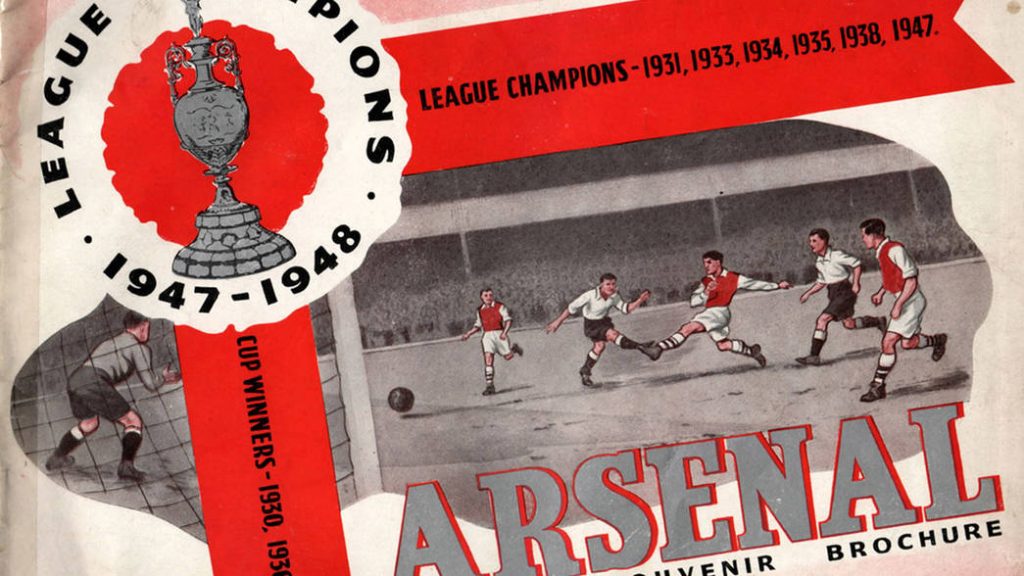
Hard years would come without titles, until in the 1969-1970 season Arsenal won their first international title, the Fair Cup against Anderlecht, which was followed by a League-FA Cup double the following season, and so in the 1972 season, as league champions, they took part in the European Cup for the first time. The 70’s would also bring a European Cup Winners’ Cup final against Valencia, which they would lose on penalties, and three FA Cup finals, of which they won the 1979 final against the Red Devils of Manchester United.
The eighties and early nineties would have in the figure of coach George Graham to its most important man. As an Arsenal player he was the hero of the 71st FA Cup victory and would now bring the club new titles as coach in the form of the League Cup in 1987, the League in 1989 and in 1991, a season in which they only lost 1 game and conceded only 18 goals (much of this was the fault of a newcomer goalkeeper who would make a long career at the club, David Seaman), FA Cup and League Cup in 1993 and a European Cup Winners’ Cup in 1994 won 1-0 against Parma at Copenhagen’s Parken Stadion. In this Arsenal there are already such charismatic names as the aforementioned goalkeeper David Seaman, Lee Dixon, Tony Adams, Paul Merson or Ian Wright (who was unable to play in the final).
In early 1995 George Graham was dismissed from Arsenal after it was discovered that he had benefited from bribes from an agent for the acquisition of some players. At the end of that same season, Arsenal were able to retain the Cup Winners’ Cup title by reaching the final again, but the opponent, Real Zaragoza, ended up lifting the title with Nayim’s famous goal almost from the middle of the pitch.
In 1996 the Gunner story changed again, as a new manager arrived at Highbury, Arsène Wenger. The Frenchman had just spent 18 months in Japan and at first people were suspicious and wondered who Arsène Wenger was, but he quickly convinced the sceptics by winning a Premier-FA Cup double in his first season followed by another double in the 2001-2002 season.
One of his most important achievements was undoubtedly the Premier he won in the 2003-2004 season, a season in which they won the title without losing a single game, won 26 games and drew 12, but there is more, if we count the last 3 games of the previous season and the 9 games of the following season, Arsenal were undefeated in a total of 49 games, with 36 wins and 13 draws… Sol Campbell, Ashley Cole, Dennis Bergkamp, Patrick Vieira, Robert Pires, Sylvain Wiltord and Thierry Henry (who was the top scorer with 30 goals that campaign) were members of that historic team called The Invincibles.
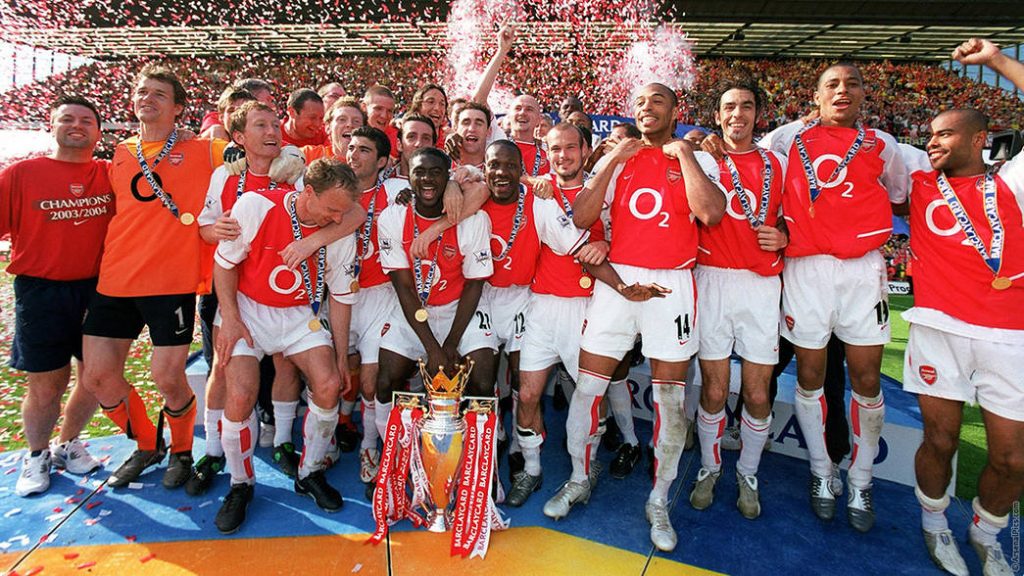
The only thing that always resisted Wenger was winning some European competition, and he had it within reach. In the 1999-2000 season he would reach the UEFA Cup final, but would lose on penalties to Galatasaray, and in the 2005-2006 season he would reach the Champions League final against F.C. Barcelona. Arsenal were only 13 minutes away from going into extra time in a match where they played with 10 from the 18th minute of the first half, they managed to take the lead, but finally lost 2-1. That was the closest Wenger ever came to winning the Champions League.
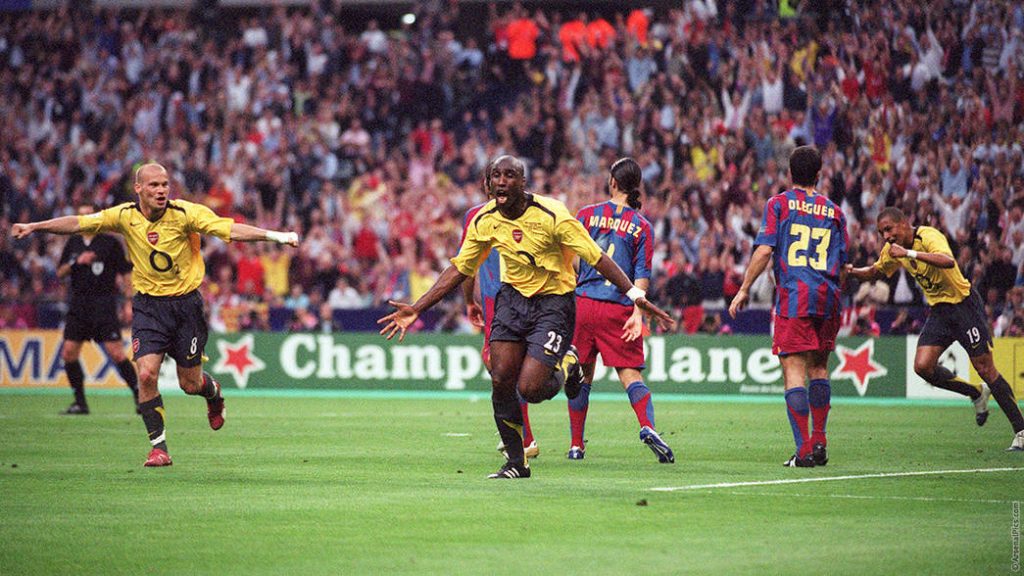
Another very important event for the club would occur in 2006. On May 7th of this year the Gunners played their last game at Highbury, their home for 93 years, to move into their brand new home, Emirates Stadium, built just a stone’s throw from Highbury. In that last and frenetic game Arsenal beat Wigan 4-2 with an unforgettable hat-trick by Thierry Henry to secure fourth place in the standings and to get a ticket to play the Champions League the following season. Today, on the site where Highbury used to be, we find a luxury residential area with a square and the only thing that remains of the old stadium is the façade of the former East End grandstand, with its iconic art deco symbol over the entrance designed by Champman and the architect of the east and west stands (symbol that we can see in the illustration at the entrance to the post and that represents the A for “Arsenal”, the ball to refer to “football” and the C for “Club”…Arsenal FC).
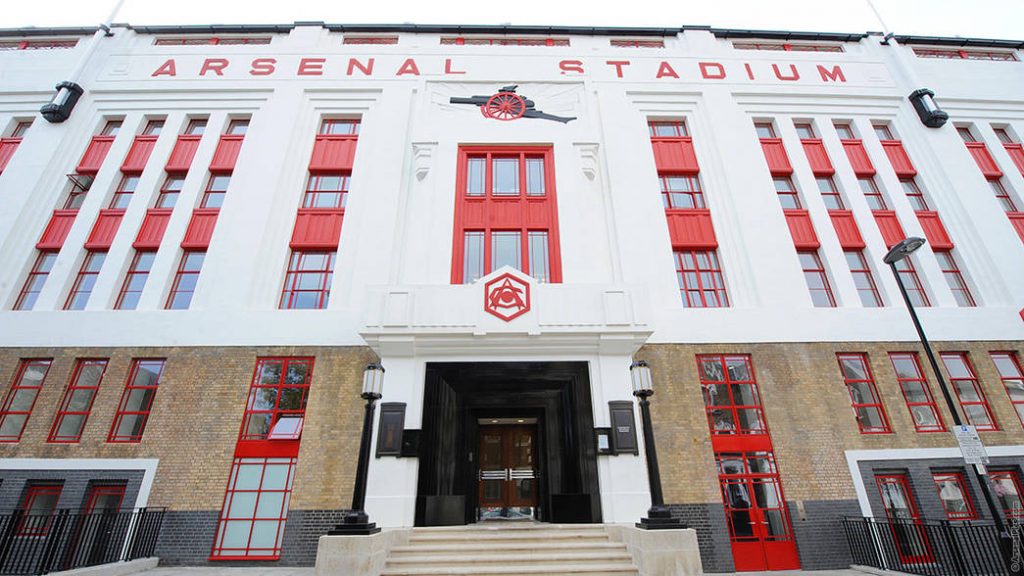
As a curious fact, Arsenal played that last season at Highbury with a dark red shirt with gold lettering, white trousers and dark red socks as a tribute to the club’s beginnings at Highbury.
It should also be noted that the first match at the Emirates was on 22 July 2006 in a tribute match to Dennis Bergkamp – an emblematic Arsenal player who had just retired from football – between Arsenal and Ajax.
To summarise Wenger’s career just by the titles he won (there were 17 titles: 3 Premier, 7 FA Cup and 7 Community Shield (equivalent to the Super Cup) would not do justice to his legacy. To talk about Wenger is to talk about something much bigger, as Herbert Chapman did at the time. Today Arsenal has a pattern of play that is recognisable from the youth level thanks to the philosophy that Wenger instilled, a philosophy based on touch football, on looking after the ball. For him, not everything was good enough to win and that’s why he had a strong rivalry with coaches with such an opposing philosophy as Mourinho.
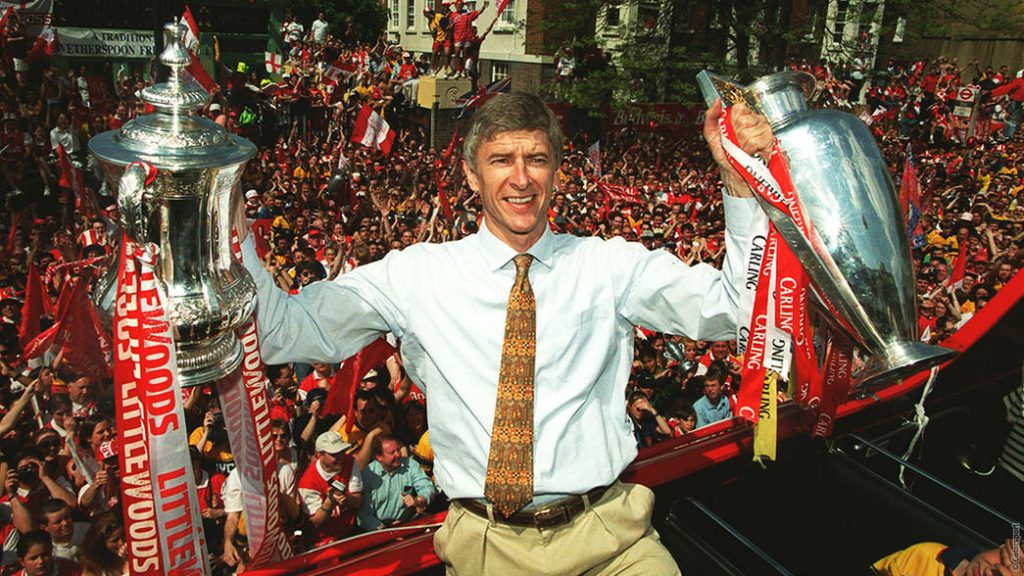
Another of its most outstanding features was to “discover” and promote new talent from the quarry. Wenger gave the alternative in the first team to many of them, Cesc Fábregas, Ashley Cole, Gael Clichy, Coquelin, Carlos Vela or Jack Wilshere to name but a few. In addition, he also had a good eye for fishing in other teams and bringing in players who were still untapped but who would be in his charge, such as Eboué, Flamini, Kolo Touré, Theo Walcott, Oxlade-Chamberlain, Ramsey, Nicolas Anelka or Robin Van Persie among others.
In total, Arsene Wenger spent 22 seasons at the helm of the team and, while it is true that the last few years were not good (in my opinion Wenger should have left Arsenal a few years earlier), I believe that no one can doubt that the Arsenal we all recognise would not have been possible without him.
Finally, on 6th May 2018 Wenger led his last game in charge of Arsenal, and to end such a long and special relationship well, Arsenal beat Burnley 5-0 in a tremendously emotionally charged match.
After a loss of such caliber, the owners of the club interviewed a series of candidates and decided on the Spanish Unai Emery, a controversial choice since, although Emery arrived with 3 Europa League wins at the head of Sevilla and with all the national titles won with PSG, not doing a good job in the Champions League with that transatlantic and the fact that his script does not resemble the Wenger profile, generated not a few doubts at first.
After a shaky start in Premier League, Arsenal managed to find a winning dynamic that led them to finish in fifth place in the league, but above all it would lead Arsenal to another European final. Arsenal faced Chelsea at the National Stadium in Baku and in Emery’s fetish competition, the Europa League, but everything went wrong that day and Chelsea overwhelmed them 4-1. That result accompanied Emery and his boys until the start of the following season, where a seven-game run without a win and tremendous popular and media pressure led to the Basque coach being dismissed.
Arsenal wanted this time that the witness was taken by someone akin to the style of game that Wenger established, a coach with the same profile, and then they thought of a Mikel Arteta who was also an unknown as he lacked experience as a first coach, but in his favor was the fact that he was at the command of Wenger in his time as a player and also served at that time as assistant coach of Manchester City Pep Guardiola, with a very Wenger philosophy as well.
For the moment, the bet is not going badly, although Arsenal, for budget and history, has to be fighting for the Premier League again every season, something that has not been done for many years. Still, for football lovers, we will always be reminded of Arsene Wenger’s The Invincibles.
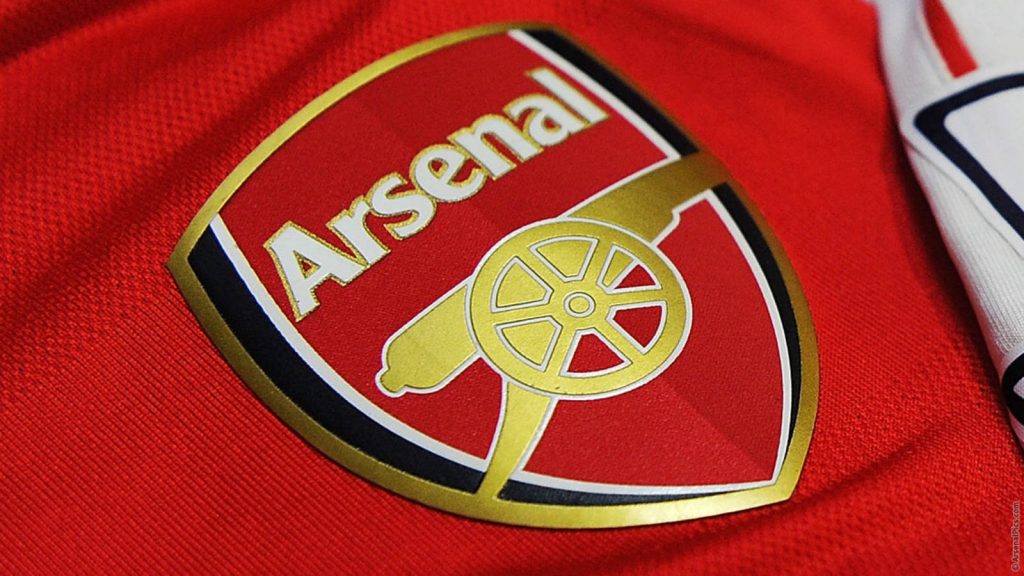
Source of information and photos: Arsenal.com

